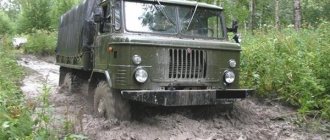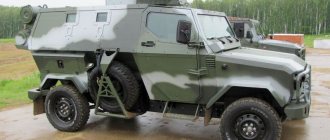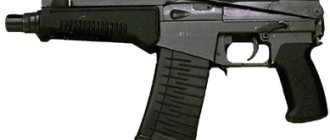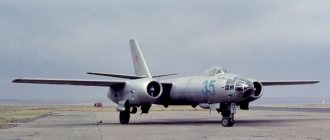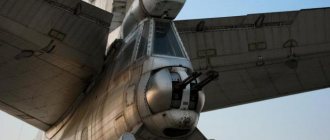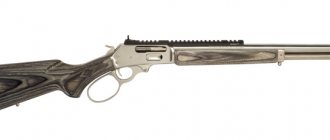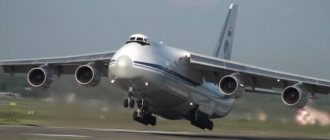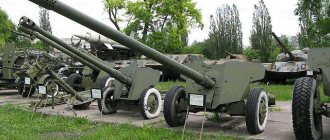| This article lacks links to sources of information. Information must be verifiable, otherwise it may be questioned and deleted. You may edit this article to include links to authoritative sources. This mark was set on January 26, 2020 . |
Ural-4320
Ural-4320 on Wikimedia Commons
Total information
| Manufacturer | Ural Automobile Plant |
| Years of production | 1977–present |
| Assembly | UralAZ (Miass, Russia) UralAZ (Miass, Russia) |
| Class | off-road truck |
Design
| Body type(s) | truck tractor, flatbed, awning, shift, tank and fuel tanker |
| Layout | front-engine, all-wheel drive |
| Wheel formula | 6 × 6 |
Engines
KamAZ-740, YaMZ-236, YaMZ-238, YaMZ-6565, YaMZ-536
| Brand: | KamAZ-740, YaMZ-236, YaMZ-238, YaMZ-6565, YaMZ-536 |
| Type: | diesel |
| Volume: | 10,857 or 11,150 (YaMZ) cm3 |
| Maximum power: | 210 and 230 or 240 and 300 or 330 (YaMZ) l. s., at 2000 rpm |
| Maximum torque: | 637 or 883 (YaMZ) Nm, at 1400 rpm |
| Configuration: | |
| Cylinders: | 8 |
| Max. speed: | 85 km/h |
| Fuel consumption combined cycle: | 40 l/100 km |
| Fuel consumption in the urban cycle: | 30—50 l/100 km |
| Fuel consumption on the highway: | 30 l/100 km |
| Cylinder diameter: | 120 mm |
| Piston stroke: | 120 mm |
| Compression ratio: | 17 |
| Cylinder operating order: | 1-5-4-2-6-3-7-8 |
Transmission
| manual 5-speed | |
| Manufacturer: | KamAZ |
| Type: | mechanical |
| Number of steps: | 5 |
| Gear ratios: | |
| 1st gear: | 5,62 |
| 2nd gear: | 2,89 |
| 3rd gear: | 1,64 |
| 4th gear: | 1,00 |
| 5th gear: | 0,724 |
| Reverse gear: | 5,30 |
| Switching: | floor lever |
The transfer case is two-stage.
Gear ratios: 1st gear - 2.05; 2nd gear - 1.30 (since 2002, the gear ratio of 2nd gear is 1.21). The main gear of the drive axles is double, the gear ratio is 7.32. Characteristics
Mass-dimensional
| Length | 7366 mm |
| Width | 2500 mm |
| Height | 2715 (with awning 3005) mm |
| Clearance | 400 mm |
| Wheelbase | 3525+1400 mm |
| Rear track | 2000 mm |
| Front track | 2000 mm |
| Weight | 8050 kg |
| Full mass | 15 205 |
On the market
| Predecessor Predecessor Ural-375D | Successor Successor Ural Next |
| Similar models | ZIL-131, KrAZ-255B |
Other
| Load capacity | 6855 kg (+ towable trailer = 11,500 kg) |
| Volume of the tank | 300 + 60 l |
"Ural-43206" at the parade (Eastern Military District)
Long wheelbase "Ural-4320"
Ural-4320
- a dual-purpose off-road truck with a 6 × 6 wheel arrangement, produced at the Ural Automobile Plant in Miass (Russia), including for use in the armed forces in the Susha family of unified army vehicles until 1998.
Today, the Ural-4320 series is produced with YaMZ diesel engines with a capacity of 230-312 hp. With. environmental class from Euro-4. Tire size - 14.00 R20 (370 R508). Model OI-25 - produced by the Kama and Rosava factories. Model Ya-307M - produced by the Belshina and Rosava factories.
Story
| This section is missing references to information sources. Information must be verifiable, otherwise it may be questioned and deleted. You may edit this article to include links to authoritative sources. This mark was set on June 19, 2020 . |
Production of trucks and chassis of the Ural-4320 line began on November 17, 1977[1] and in fact this series is still being produced today, albeit in a significantly modernized form.
The main difference between the Ural-4320 and the carburetor Ural-375D line is the economical and high-torque diesel engine. As of 1986, more than a million trucks were produced. Initially, the Ural-4320 was equipped with a KamAZ-740 diesel engine, but as a result of a fire at the KamAZ engine plant on April 14, 1993, supplies of this engine to third-party manufacturers ceased, and engines began to be installed on the Ural-4320 (as well as all subsequent models and modifications of Ural trucks). YaMZ-236 and YaMZ-238 Yaroslavl Motor Plant. Due to the resulting shortage of diesel engines, some of the Ural-4320 produced in 1993-1994. was forced to be equipped with a ZIL-375 carburetor engine, that is, the production of the Ural-375D model was actually extended, but with a type 4320 engine compartment tail. Initially, modifications with the YaMZ-238 engine were distinguished by an outwardly longer engine compartment, while cars with the YaMZ-236 engine retained the same engine compartment as that of vehicles with a KAMAZ-740 engine (the difference is that vehicles with YaMZ-236 have an air filter on the right wing due to a different, more dense layout of the engine compartment). Since the mid-2000s, all cars, regardless of engine model, have been produced with an extended engine compartment.
Since the mid-1990s, a wide bumper with headlights appeared on the Ural-4320 and Ural-5557, and plastic plugs appeared in the wings, at the old headlight mounting points. However, exclusively for the needs of the Ministry of Defense, on a special order, until now [ when?
] cars are supplied with a narrow bumper and headlights in the wings. Since 1996, the production of the lightweight two-axle (4x4) 4.2-ton truck Ural-43206, structurally completely identical to the three-axle Ural-4320, began.
Ural-43206 with IVECO cabover cab
In 2009-2014. On cars of the 4320 series, a cabover cab of the Iveco “P” type (produced by the UralAZ-IVECO joint venture) with an original rounded integral fiberglass hood tail (the “-57” and “-58” configurations) was installed in small series. Subsequently, such a cabin began to be installed on the Ural-4320 chassis and in a cabover version. With the transition to Euro-4 engines, only modern diesel engines of the YaMZ-6565 and YaMZ-536 series began to be used in the Ural-4320.
In 2014, in order to increase the reliability of chassis components and assemblies and increase the mileage before overhaul, the Ural-4320 series was upgraded to the Ural-M series while maintaining the 4320 type cab.
In the fall of 2020, the Ural-M series was upgraded to the Ural Next series by installing new generation cabs of the GAZelle Next type with the original plastic tail of the engine compartment, as well as a number of improved components and assemblies.
- Load distribution of the equipped vehicle = front axle - 4550 kg, rear bogie - 3500 kg
- Gross vehicle load distribution = front axle - 4635 kg, rear axle - 10,570 kg
Device Features
The technical characteristics of the URAL 4320 machine, or rather its features are as follows:
The car is based on a supporting riveted frame. The material of its manufacture is steel of the highest strength. The frame is characterized by powerful rigidity. The design has short overhangs. They are located at the back and front. Thanks to this, the vehicle's cross-country ability improves.
Technical characteristics of the Ural 4320 30, its features:
The platform for transporting passengers is made of metal. It has seats on the sides and a board at the back. The seats can be raised and the side can be opened. An awning, arches and sides on both sides can be installed on the body.
Some modifications have a wooden platform. The model can have solid or lattice sides. The design implies forward positioning of the motor. To access it, the hood must be opened up. Flat-shaped wings are concentrated on the sides. They are large and protect the cabin from the penetration of foreign objects and various dirt during movement.
Technical characteristics of Ural 4310:
The wheel design of the truck is 6 x 6. The vehicle is equipped with wheels with one slope. Their chambers can be filled using the auto-adjustment method. Air flows to three bridges. The optimal type of tire for this model: 14.00-20 OI-25.
The car has suspension at the front. It is supported by springs. There were also dual-directional shock absorbers. Another dependent suspension is located at the rear. It is supported by devices on reaction rods. Each axle in the car is driving. The position of the adjustable wheels is front axle.
The machine is equipped with a friction type clutch. It has a drive that is equipped with a pneumatic amplification device.
The transfer case is mechanical. The number of stages is 2. It has a permanently attached drive that faces the axle from the front.
The car's transmission is absolutely synchronized. The gearbox is five-speed. Switching method is mechanical.
Braking technology includes primary and secondary systems. The first has two circuits, the second has one. There is also assistive technology. It contains pneumatics from the exhaust mechanism.
A type of parking technology is mechanical. A drum is placed in it on the distributor. Powerful towing devices are mounted on the rear of the frame and on the front of the rigid bumper. Their type: towing technology and hooks. Due to them, the technical qualities of the machine have improved.
Cabin Ural 4320
Cabin
The developers also took care of the driver. In the latest modifications, power steering has appeared. There is a heater in the cabin. It maintains a comfortable temperature in cold weather.
The driver's seat can be easily adjusted in three directions:
- according to the inclination of the back,
- upper-lower,
- anterior-posterior.
The instrument panel is located at a convenient distance from the driver. All devices can be read without problems. And you can reach the switches and buttons without getting up from your chair.
The cabin also has a convenient and massive glove compartment and shelves on which you can place items. There is a box under the passenger seats for important papers.
In the basic variation, a cabin designed for three seats is placed on the frame. Made from stamped sheet metal. Thanks to proper glazing, excellent visibility is obtained. This makes it easier for the driver to monitor the traffic situation. Massive mirrors that display the rear view also serve as assistants in this matter.
Other available cabin versions:
- For 3 places. Number of doors – 2. All-metal.
- A similar version, but supplemented with a sleeping place (no longer available).
- Volumetric hood. It has a customized driver's seat and plastic trim.
- Created on the basis of the GAZelle Next modular system. There are versions for 3 and 7 seats.
Optional additions to the machine:
- Cabins of the highest comfort.
- Differential locking technology.
- ABS.
- The battery compartment is insulated.
- Spare tank.
Modifications
| This section is missing references to information sources. Information must be verifiable, otherwise it may be questioned and deleted. You may edit this article to include links to authoritative sources. This mark was set on June 19, 2020 . |
Motovoz-M.
- Ural-4320-****-**
- chassis with a standard (“classic”) metal cabin, with a load capacity of about 7-9 tons; - Ural-4320-19**-**
- long-wheelbase chassis, with a load capacity of about 12 tons; - Ural-43203-****-**
- chassis with reinforced front suspension; - Ural-43204-****-**
- chassis of a pipe-weaving tractor, increased load capacity; - Ural-44202-****-**
- truck tractor for operation with a semi-trailer on all types of roads; - Ural-5557/55571-****-**
- chassis for mounting technological equipment and special installations weighing ~12-14 tons with low-profile wide tires with adjustable wheel inflation, which significantly increases the vehicle’s cross-country ability; - Ural-43206-****-**
- chassis with a 4 × 4 wheel arrangement;
Cockpit and tail options:
- Ural-4320*/5557*-****-40/41
- all-metal, three-seater, two-door cab, also under the index there are vehicles with a double four-door cab; - Ural-4320*/5557*-****-42/44
- all-metal, three-seater, two-door cabin with a sleeping bag. Currently discontinued; - Ural-4320*/5557*-****-48/58/59
- version with a new more voluminous comfortable hood-type cabin, plastic tail, sprung driver's seat; - Ural-4320*/5557*-****-70/71/72/73/74/75
- version using the Gazelle Next cabin module, can be three-seater or seven-seater;
All versions can also be equipped with IVECO cabover cabs.
Armored army modifications
Ural-4320-09-31
An armored vehicle based on the Ural-4320-31 with a cabin molded from a single armored sheet, with armored glass, embrasures for firing, powerful safe doors equipped with locks with internal locking.
The cabin floor, rear wall and roof are also made of armor plate, and there is an armored hatch in the roof that can be used as a machine gun nest. The cabin became double, with separate seats. In the vacant space, special equipment was installed: night vision devices, radiation and chemical reconnaissance, an army radio station, etc. In addition to the usual “stove,” a filter and ventilation unit (FVU) is mounted on the roof.
The car is equipped with a steel “mask” on the radiator; the sides and hood are made of armor plate. The battery box and fuel tank are also armored. An armored module for 15-20 soldiers can be installed in the body under the awning. There are only wooden benches inside.
Ural-E4320D-31 (Ural-4320-0010-31)
An armored multi-purpose vehicle of the unified Motovoz-1 family with an armored functional module installed on the vehicle platform, designed for transporting various cargo, personnel and towing trailer systems on all types of roads and terrain. Developed on the basis of the Ural-4320-31 type 6 × 6 vehicle. The armored vehicle has increased protection from small arms fire and mine resistance. It was first presented at the Russian Expo Arms-2009
in Nizhny Tagil. On June 10, 2011, at a display of military equipment at the training ground of NIIITS AT 3 Central Research Institute of the Ministry of Defense of the Russian Federation in Bronnitsy, the car was presented as Ural-4320-0010-31.
Casspir Mk6
Armored vehicle MPVI
(eng. Mine Protected Vehicle for India), manufactured at the joint venture
Defense Land Systems India (DLSI)
at the
Mahindra & Mahindra
plant in Prithla near Faridabad (Haryana). The order of these six vehicles by the government of Jharkhand was due to the need to combat pro-Maoist rebel groups operating in the state.
The vehicle is made in the form of a structure based on an all-welded V-shaped body and the base of the chassis of trucks of the Ural-4320 family. Modifications are offered with 4 × 4 and 6 × 6 wheel arrangements, equipped with a YaMZ-236NE2 turbocharged diesel engine (maximum power 230 hp / 169 kW) and a YaMZ-236U manual transmission. This solution was chosen to reduce the cost of the machine, the cost of which is stated to be from 350 thousand dollars. According to a statement by the director of business development of BAE Systems Land Systems South Africa
Johan Jooste, “the use of Ural elements made it possible to reduce the cost by a third.”
In the 6 × 6 version, the vehicle has a length of 7.59 m, a width of 2.67 m, a ground clearance of 380 mm, and a combat weight of 14.32 tons. The armored vehicle can accommodate up to 18 personnel, placed in individual suspended shockproof seats and can be configured in the form of an armored personnel carrier, multi-purpose or command vehicle. It is stated that during testing, the vehicle withstood, without harm to personnel, the detonation of a twenty-one-kilogram charge under the wheel (the accuracy was confirmed by a video of the corresponding tests posted on the Internet [2]) and a fourteen-kilogram charge under the body of the vehicle. It is possible to attach additional ballistic protection[3].
Ural-4320VV
"Ural-4320VV"
| Ural-4320ВВ on Wikimedia Commons |
The armored vehicle was designed according to the Motovoz-2 program according to the technical specifications of the main command of the Russian Ministry of Internal Affairs on the basis of the Ural-4320 6 × 6 multi-purpose vehicle chassis. The armored vehicle is equipped with a YaMZ engine of Euro-4 standard, has mine protection and is made with single-volume armored a body that can accommodate up to 17 fighters with full weapons. The layout of the armored vehicle is free, which makes it possible to install various variants of combat modules and equipment on it, depending on the assigned operational tasks.
The car was first presented in 2013 at the Russian Arms Expo-2013
in Nizhny Tagil. This vehicle will become the basis for a whole family of tactical protected vehicles, which have a high degree of unification and are distinguished by different wheel formulas.
Chassis Ural-44202
The frame of the Ural-44202 car is riveted, consisting of two stamped spars of variable cross-section, which are connected to each other by 6 cross members and a front buffer.
The front suspension consists of 2 longitudinal semi-elliptical springs, operating together with hydraulic shock absorbers of a telescopic type of 2-way action. The upper lugs of the shock absorbers are attached to the bracket brackets through rubber bushings, and the lower lugs are attached to brackets welded to the axle housing. Hydraulic shock absorbers dampen vibrations resulting from elastic deformations of the truck's suspension elements when it moves over various uneven surfaces.
The rear suspension is of the balancing type, the ends of the springs are inserted into the eyes of the support brackets. The springs are attached by stepladders to balancers that swing on the axis of the balancer. Brackets are pressed onto the axle, each of which is attached to the balancer brackets with four bolts. Pushing and braking forces are transmitted from the axles to the frame through 2 upper and 4 lower reaction rods. Lateral forces are transmitted through springs.
The reaction rod joints are ball joints. Pins with a shortened cone are mounted on the upper reaction rods on the side of the bridges, which are kept from turning in the brackets by segment keys. The head of the reaction rod is sealed on one side by a gasket, which is installed under the cover, and on the other by an O-ring. The impacts of the axles on the frame, resulting from vehicle wheels hitting obstacles, are softened by a buffer. We limit the downward movement of the axles by pinching the end of the spring in the support bracket
Wheels 254G-5O8, 4OOG-5O8 and ZZO-5ZZ have the same design and differ in size, in accordance with the used tires 14.OO-2O model 0I-25, 12OO x 5OO-5O8 model ID-P284 and 11OO x 4OO-5ZZ model O-47A. The wheels are detachable, consisting of rim bases, beads, lock rings and lock ring stops. The wheels are equipped with a tire pressure regulation system. It allows you to control the pressure and maintain it within normal limits, as well as increase the vehicle's cross-country ability by reducing the air pressure in the tires. It provides the opportunity to continue driving the vehicle if the inner tube is punctured, without replacing the wheel (the wheel valves on undamaged wheels must be closed).
Technical Briefs
Physical parameters of the machine (dimensions Ural 4320):
- Body length Ural 4320 – 736.6 cm.
- The width of the Urals is 250 cm.
- Height – 287 cm.
- Wheel base – 352.5 cm.
- Front track – 200 cm.
- Rear track – 200 cm.
- Clearance parameter – 40 cm.
- The smallest turning radius is 1140 cm.
- The curb weight of the URAL is 4320 – 8050 kg.
- The total weight of the URAL 4320 is 15205 kg. This is how much a Ural car weighs in working condition.
For the overall dimensions of the Ural 4320, the weight placed should not exceed 6855 kg. The weight of the trailer being towed reaches 11,500 kg. The distributed pressure on the front axle is: 4550 kg, on the rear axle - 3500 kg. The number of seats for passenger transportation varies from 27 to 34. How much the Ural 4320 weighs is now clear, let’s look at the speed indicators.
The highest speed developed by the model is 85 km/h. Average fuel consumption at a speed of 60 km/h is 35-42 liters. At a quieter speed - 40 km/h, the fuel consumption of the URAL 4320 according to technical characteristics is from 31 to 36 liters.
The vehicle design has a main and reserve fuel tanks. The volume of the fuel tank URAL 4320 (first) is 300 l., the volume of the Ural tank (second) is 60 l. The second is installed in some models. The machine copes with a climb, the parameter of which is no more than 58%.
Car cost
At the moment, the cost of a new Ural-43206 car depends on the modification:
- flatbed with awning - 1.535 million rubles;
- rotation bus - 1.6 million rubles.
At the same time, used cars will cost several times cheaper. The cost depends on the condition, as well as the year of manufacture of the vehicle:
- Ural-43206 1997 - 250 thousand rubles;
- Ural-43206 2003 - 576 thousand rubles;
- Ural-43206 2006 - 830 thousand rubles;
- Ural-43206 2014 - 1 million rubles.
This car has a large number of different advantages that make it almost irreplaceable when used in difficult off-road conditions. There are many different modifications. This will allow you to easily select a suitable vehicle of the Ural 43206 type.
Cabins "Ural-4320"
The Ural-4320 trucks were equipped with a metal two-door cabin designed for a driver and two passengers. The classic, traditional Uralov cabin has been produced for fifty years now, and, of course, the comfort indicators in it are infinitely far from modern ones. Although: the driver's seat is adjustable, there are ventilation and heating systems, there is power steering, and it is possible to equip the cabin with a sleeping place. If desired, the Ural-4320 can be equipped with an air conditioner, an independent heater and a Webasto pre-heater.
To create more comfortable travel conditions and better safety, since the spring of 2009, successful experiments have been undertaken to equip the newly developed Urals with new-style cabins. This is a license-manufactured cab without a hood with a fiberglass tail. It has three separate anatomical chairs with headrests, armrests, and seat belts.
In the interior decoration and cladding there are modern materials that provide good noise and heat insulation, a steering wheel with lower spokes (which does not overlap the instruments). All controls are located in close proximity to the driver; the parking brake and transfer case control drive is pneumatic (which made it possible to remove the levers from the passenger compartment). The new cabin provides comfortable working conditions for the driver. But the charismatic appearance of the car, of course, completely takes away from it.
Transmission
The design of the car uses a clutch model YAM3-182 - dry friction type, single-disc, with an extension-type diaphragm spring. The gearbox is installed YAM3-2Z6U - mechanical, five-speed, three-way. It is equipped with synchronizers in all gears except first. The gear ratios are as follows: 1st – 5.22; 2nd – 2.9O; Zya - 1.52; 4th - 1,OO; 5th – O.664; rear - 5.22.
The transfer case is mechanical, 2-speed, with a lockable center cylindrical differential, which distributes torque between the front and rear axles in a ratio of 1:2, with the drive to the front axle constantly engaged. Top gear ratio – 1.21; low gear - 2.15.
The cardan transmission is an open type, with four shafts and hinges on needle-type bearings. All axles are driven, axle housings are combined, consisting of a cast middle part and axle housings that are pressed into it. The front axle is steerable, with disk-type constant velocity joints.
The main transmission is double, through-type, a pair of bevel gears with a spiral tooth, and a pair of cylindrical helical gears. The main gears of all axles of this vehicle are interchangeable. The differential is a symmetrical conical, with 4 satellites. The axle shafts are fully balanced, the connections to the hubs are splined.
Features of operation
Problems with brakes often arise. This issue is resolved by installing hydro-pneumatic amplifiers. The optimal solution in this case would be FUSO.
Difficulties arise with cars that have been taken out of storage. If the car is more than 10 years old and has not been used for a long time, it is necessary to replace all oil seals, as well as bearings in the hubs.
According to user reviews, the cabin is quite comfortable while driving. But significant difficulties arise if you need to sleep in it. Because the car is simply not designed for this.
It is also important to remember that the operating manual for this type of vehicle expressly prohibits sleeping with the heating unit turned on in the cabin.
Therefore, the optimal solution would be to install a heater from a third-party manufacturer.
Important features that all owners without exception pay attention to and that need to be paid attention to include:
- during intensive use, overheating of the heater boiler is possible - this usually occurs when ice plugs occur in the supply pipes; this can be corrected by pouring hot water over it;
- the heater does not turn on - the cause is usually clogged injectors (corrected by disassembling the injectors and washing them in kerosene or gasoline);
- increased noise of the bridge while driving at high speed - the clearance in the gearbox bearings has been increased (it is necessary to restore the preload);
- deterioration in controllability - usually the safety valve pump seat comes loose (you will need to disassemble the pump and screw the seat to the desired position).
The list of possible faults is quite extensive. It is best to familiarize yourself with all of them in advance. This will avoid various operational problems.
Exterior
The body of a domestic car is a metal platform with a folding side at the rear. It is equipped with benches, an awning and removable arches, additional lattice sides. The structure is made in the form of short overhangs, which allows for increased cross-country ability. The total curb weight is 8,265 kg. The weight of the equipment or cargo being transported can reach 6,855 kg, and up to 11.5 tons can be towed.
The standard configuration includes a 3-seater cabin on the frame, which is assembled from thick sheet metal, which is also stamped. As for the glazing, it is made in such a way that the visibility of the driver of the car makes it possible to fully monitor the situation on the road. For this purpose, side rear view mirrors were made, which are very convenient.


